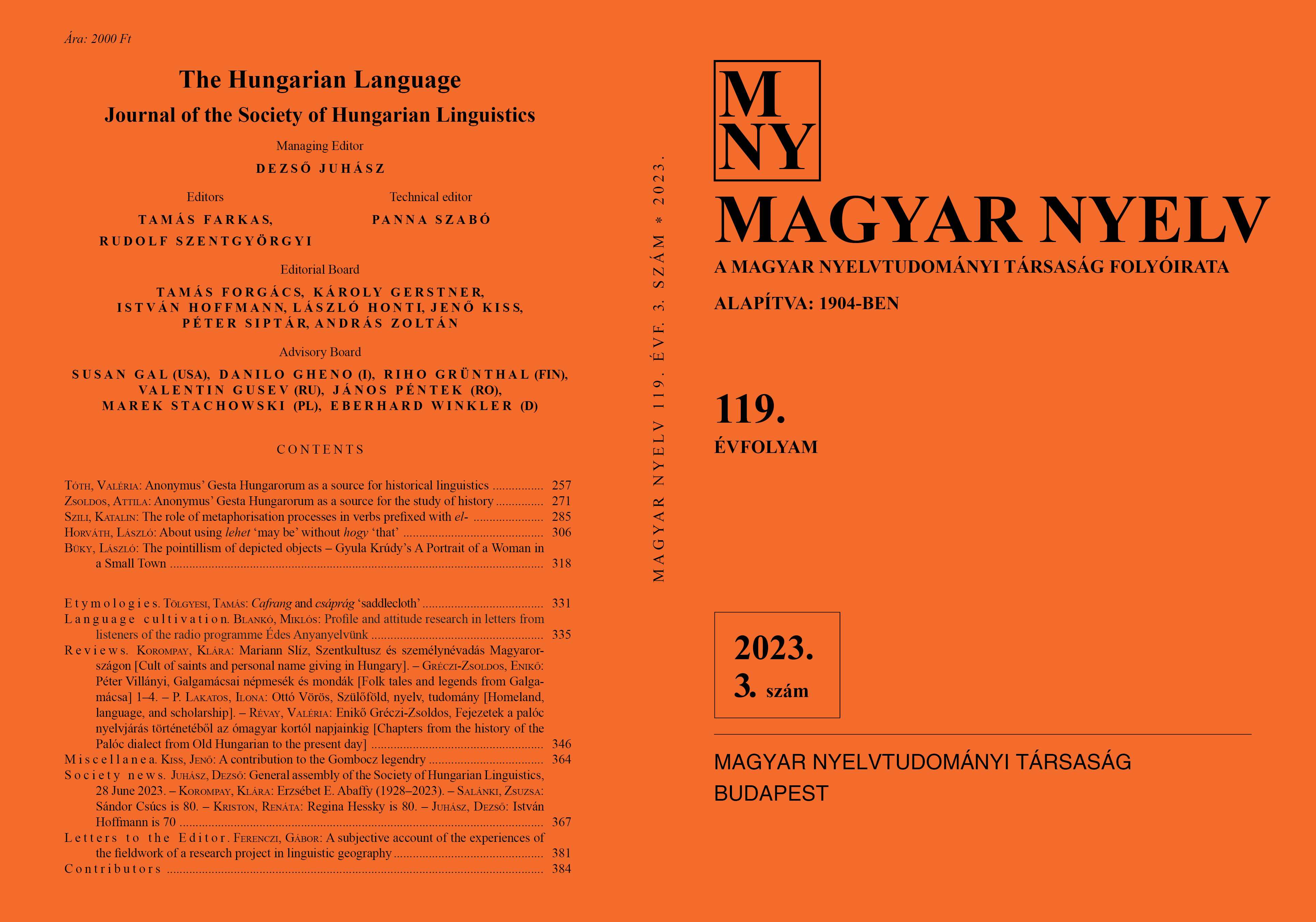The role of metaphorisation processes in verbs prefixed with el-
DOI:
https://doi.org/10.18349/MagyarNyelv.2023.3.285Keywords:
metaphorisation, orientational metaphors, image schema metaphors, prefixed verbs with el-, linguistic representationAbstract
Drawing on the full set of verbs prefixed with el-, the paper uses a cognitive framework to explore the role of metaphorisation in meaning making, focusing on the source–path–goal schema. According to its basic idea, functions expressing a specific change of direction carry various image schemas, and groups of metaphorical meanings are linguistic representations of conceptual metaphors exploiting image schemas as source domains. This approach has shed light on the organic relationship between concrete and abstract meanings and has clarified that verbs prefixed with el- represent a wide range of events and states associated with the concept of bad. Examples include cessation/physical destruction is moving away; isolation is moving away; fear, the emergence of fear is moving away; unconsciousness is moving away; error/bad is moving away from the straight direction; bad, the attainment of a defective state is moving away, etc.
Downloads
Published
Issue
Section
License
Copyright (c) 2023 Katalin Szili

This work is licensed under a Creative Commons Attribution-NonCommercial-NoDerivatives 4.0 International License.
Magyar Nyelv is a Diamond Open Access periodical. Documents can be freely downloaded and duplicated in an electronic format, and can be used unchanged and with due reference to the original source. Such use must not serve commercial purposes. In the case of any form of dissemination and use, Hungarian Copyright Act LXXVI/1999 and related laws are to be observed. The electronic version of the journal is subject to the regulations of CC BY-NC-ND (Creative Commons – Attribution-NonCommercial-NoDerivatives).
The journal permits its authors, at no cost and without any temporal limitation, to make pre-print copies of their manuscripts publicly available via email or in their own homepage or that of their institution, or in either closed or free-for-all repositories of their institutions/universities, or other non-profit websites, in the form accepted by the journal editor for publication and even containing amendments on the basis of reviewers’ comments. When the authors publicize their papers in this manner, they have to warn their readers that the manuscript at hand is not the final published version of the work. Once the paper has been published in a printed or online form, the authors are allowed (and advised) to use that (post-print) version for the above purposes. In that case, they have to indicate the exact location and other data of the journal publication. The authors retain the copyright of their papers; however, in the case of an occasional secondary publication, the bibliographical data of the first publication have to be included.



